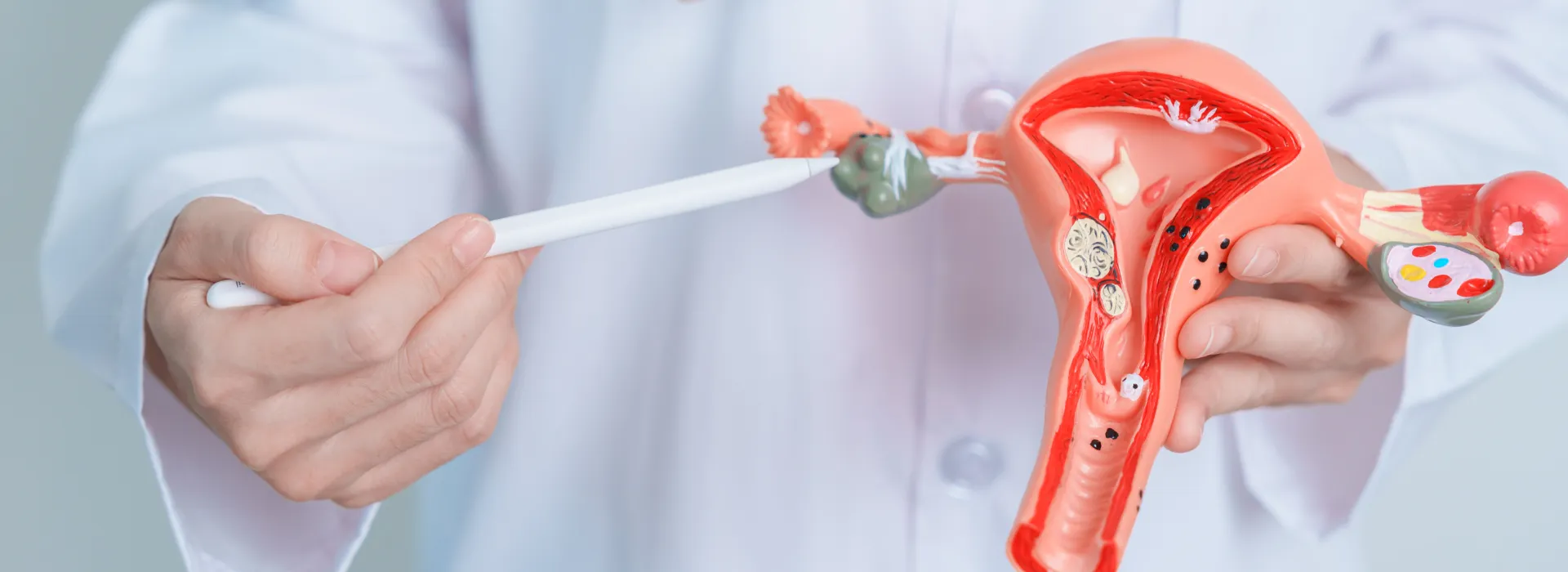Ovarian Cysts
Written by Dr Santanu Baruah, Founder, Medical Director , Fertility Specialist & Gynaecologist MBBS, MRCOG, FRANZCOG, FRCOG, CGES

Contents

An ovarian cyst refers to a fluid-filled sac or pouch that develops in or on an ovary. These cysts are prevalent and can manifest during reproductive years or after menopause. While most ovarian cysts are non-cancerous and resolve on their own, some may be malignant. Additionally, certain benign ovarian tumours can mimic cysts in imaging studies.
Varieties of cysts:
- Functional cyst: The most common type, typically asymptomatic and often resolves without intervention within 6 to 8 weeks.
- Teratoma: A cyst or benign tumour containing diverse issues like skin and hair. Teratomas may be present from birth and, in rare cases, can become cancerous.
- Cystadenoma: A benign tumour forming on the outer surface of the ovary, potentially growing significantly despite its benign nature.
- Endometrioma: Arises due to endometriosis.
Symptoms of ovarian cysts:
In many cases, cysts are asymptomatic and are discovered incidentally during routine exams or other imaging procedures. However, some cysts may cause abdominal discomfort, pain during specific activities, or intermittent pain due to ovarian twisting. Cysts that bleed or rupture can also lead to sudden, severe pain.Diagnosis of ovarian cysts:
If a cyst is suspected, a gynaecologist may recommend tests such as:- Ultrasound exam: Uses sound waves to create images of internal organs, helping determine the cyst's characteristics.
- Blood tests: Measurement of CA 125 levels and other markers to assess the risk of ovarian cancer, particularly after menopause.
Treatment options:
Various treatment options exist, depending on the type of cyst and individual factors.Options include:
- Watchful waiting: Monitoring the cyst's changes through repeat ultrasound exams.
- Surgery: Considered for large cysts causing symptoms or if cancer is suspected.
Surgical procedures:
- Cystectomy: Removal of the cyst from the ovary.
- Oophorectomy: Removal of the entire ovary, in some cases.
Surgical approaches:
- Minimally invasive surgery: Involves small incisions and a laparoscope, recommended for benign cysts.
- Open surgery: A larger incision in the lower abdomen, necessary for suspected cancer or large cysts difficult to remove via laparoscopy.
Feeling sick and unsure why? Speak with a GP online in 15 minutes.
See a Doctor now
Available 24/7, across Australia.
Feeling sick and unsure why? Speak with a GP online in 15 minutes.
See a Doctor now
Available 24/7, across Australia.
What we treat
- Cough
- Nausea & vomiting
- Fever
- Hayfever
- Fatigue
- Sore throat
- Acne
- Hair loss
- Gout
- Eczema
- Rosacea
- Sunburn
- UTI
- Erectile dysfunction
- Contraception
- Morning sickness
- Morning after pill
- Prostate health
- Anxiety
- Depression
- Stress
- Grief & loss
- Antidepressants
- Premature ejaculation
- Asthma
- Blood pressure
- Blood thinners
- Diabetes
- Cholesterol
- Migraines & headaches
- Allergies
- Body ache
- Heartburn & reflux
- Sleep disorder
- Pain relief
- Gastro
Related Articles
Disclaimer
This blog is for general informational purposes only and does not indicate that Hola Health provides all treatments or preventive measures mentioned. It is not intended to be a substitute for professional medical advice. Always seek the guidance of your doctor or other qualified health professional with any questions you may have regarding your health or a medical condition. For emergencies please immediately contact 000. Any medical topics discussed are intended to educate, not to imply availability through Hola Health.

 Facebook
Facebook  X
X  Copy Link
Copy Link



